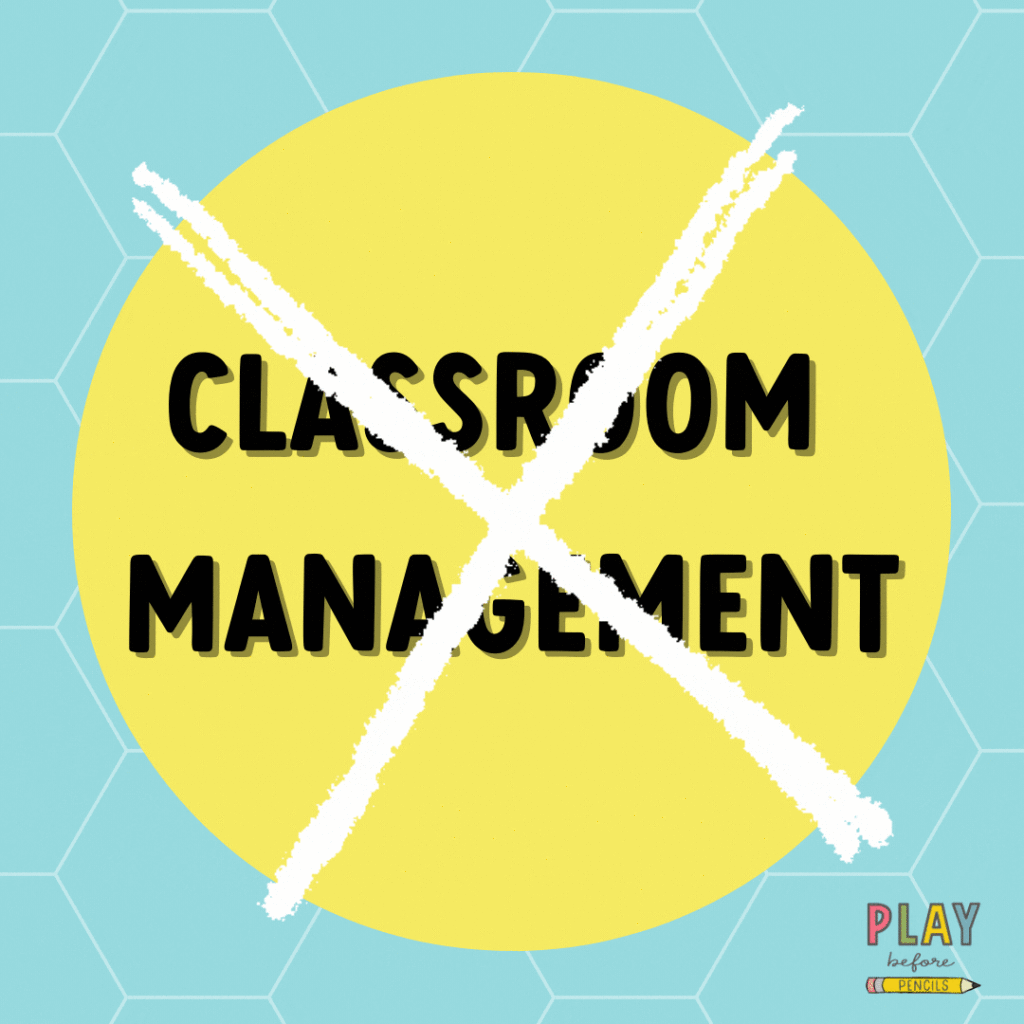I listened to a podcast several years ago on a topic that has stayed with me ever since. I wish I could find it to give credit where its due, but the notes I took at the time are something I’ve referred back to over and over since first listening to the interview.
The topic was classroom management–something every teacher considers to be a huge part of their job. The amount of time and effort that is put into effective classroom management is significant. A search for “classroom management” on Teachers Pay Teachers yields an astounding 280,000+ results! Teachers are clearly looking for support and help when it comes to managing behaviors in their classrooms because what they are doing is not working!
In asking the teachers I work with about their classroom management styles, it was quickly apparent that teachers want to approach things from a positive space, but as I listened to their strategies and techniques, it became clear that the tactics they are using are actually quite negative. The focus is on “catching” kids behaving a particular way and imposing negative consequences for that behavior. Rarely did a teacher mention how they positively reinforce the behaviors that they want to see from their students.
Classroom management sets a tone that places the teacher at the head, responsible for fixing and correcting all that is “wrong” in the classroom. It creates a reactive mindset and results in teachers feeling overwhelmed and burned out. I have no doubt that every teacher has experienced absolute exhaustion at the end of the day as a result of all of the managing that they had to take on at school. It’s a feeling that can suck all of the joy of being a teacher right out of you.

How, then, can we take the job of classroom management and turn it into a positive experience for both the teacher and the student? A simple shift in the way we view this task can make all the difference! Effective teachers have a strong foundation of knowledge in child development. As such, we understand and know what types of skills our students are capable of at any given age, and what kinds of behaviors are common. Adjusting our expectations to meet the developmental milestones of the age group we teach is critical in helping us to shift our mindset from being tasked with classroom management to being nurturers of child development.

Child Developement focuses on improving skills. It is open and receptive. The eye is on the positives in the room, always looking for what is going right. Approaching the classroom from the mindset of nurturing child development results in less stress and a calm, relaxed atmosphere.

Making the simple mind shift from imposing classroom management to nurturing child development made a tremendous difference for me back when I first listened to this podcast interview, as I was dealing with some challenging behaviors in a few of my students and I was definitely feeling overwhelmed. I was surprised how quickly I was able to approach things from a completely different place when I changed my thought process from having to “manage” these behaviors to viewing them as a normal part of child development that I could nurture into a more positive place.

Creating a nurturing classroom where the stages of child development are acknowledged and approached positively will result in students who feel seen, valued, and loved no matter what areas they may struggle in. A child who has a hard time sitting still will understand that their teacher is OK with them getting up and moving around when they need to. A child who struggles not to hit when they are frustrated will know that their teacher is on their side, ready to help them improve their self-control. And children who feel safe and valued by their teacher are better able to engage in social, emotional, and academic learning.